#svadisthana
Photo
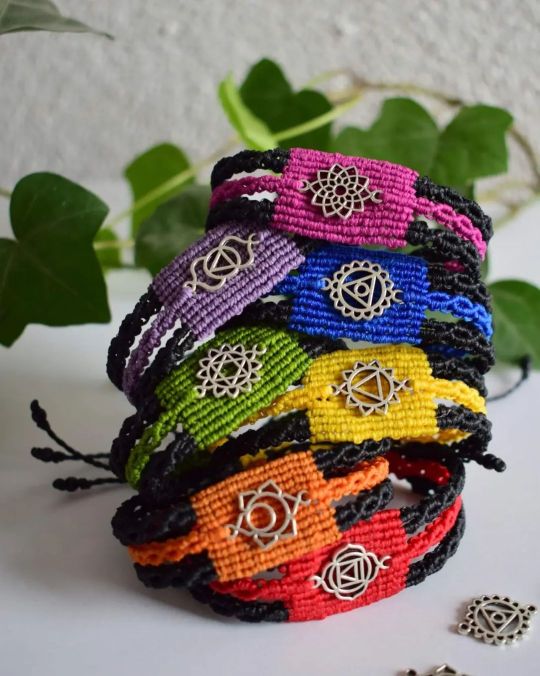
We made our second set of Chakra bracelets, this time in other design but with same signs and colors. We hope you like this touch of magic. 🪴🌱☘️ #chakra #chakrahealing #chakras #chakrabalancing #yogainspiration #rootchakra #sacralchakra #solarplexuschakra #heartchakra #throatchakra #thirdeyechakra #crownchakra #muladhara #svadisthana #manipura #anahata #visuddha #ajna #sahasrara #ajnachakra #colorfulness #colorfulbracelets #spiritual #spiritualawakening #spiritualgrowth #spiritualhealing (na lokaciji Šarena Džamija, Travnik) https://www.instagram.com/p/CpNr2xtowmb/?igshid=NGJjMDIxMWI=
#chakra#chakrahealing#chakras#chakrabalancing#yogainspiration#rootchakra#sacralchakra#solarplexuschakra#heartchakra#throatchakra#thirdeyechakra#crownchakra#muladhara#svadisthana#manipura#anahata#visuddha#ajna#sahasrara#ajnachakra#colorfulness#colorfulbracelets#spiritual#spiritualawakening#spiritualgrowth#spiritualhealing
3 notes
·
View notes
Text

#yoga#yoga academy#akif manaf#yogi#kitap#yoga felsefesi#insan#zihin#yoga merkezi#yoga akademi#svadisthana#çakra#çakra açmak
0 notes
Photo
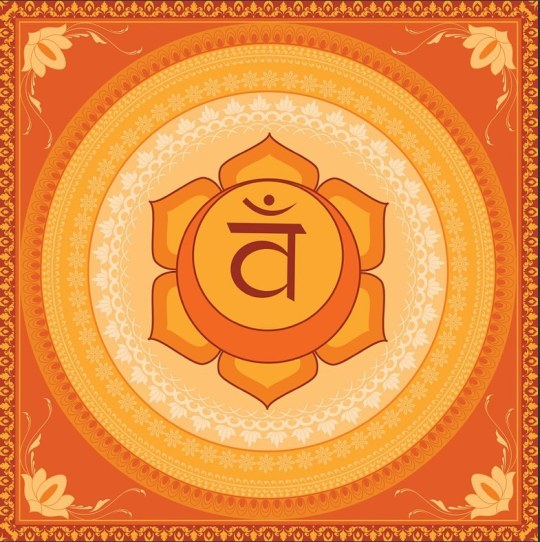
When I wake up too early, I listen to a Yoga Nidra guided meditation on YouTube, led by Liam Gillen. That happened this morning. I’d stopped it from playing about halfway through the last time I listened so I could sleep. This morning it started where I’d left off, and I realized I’d never heard the second half of it!! It’s that good at getting me to sleep. What I heard was a guided tour of the chakras, moving energy up the central channel from root to crown. I listened and went back to sleep. Woke again a bit later and my second chakra was “glowing” as he calls it. When I did my Biodynamic Meditation just now, that chakra was wide open the whole time. Svadisthana (swad-is-TAHN-a in Sanskrit) is the sacral chakra, and influences pleasure, sensuality, sexuality, creativity, relationships, kundalini energy. My sacral chakra has been rather quiet for a while, but I am tending to relationship issues this year, so this is right on! I also had radiance at my face, a bit of Tide, some swirliness. #biodynamicmeditation #biodynamiccraniosacraltherapy #craniosacralbiodynamics #craniosacraltherapy #cranio #yoganidra #chakras #svadisthana #relationships #tide #swirliness #radianceatmyface #dance (at Austin, Texas) https://www.instagram.com/p/CncMfPOuzZy/?igshid=NGJjMDIxMWI=
#biodynamicmeditation#biodynamiccraniosacraltherapy#craniosacralbiodynamics#craniosacraltherapy#cranio#yoganidra#chakras#svadisthana#relationships#tide#swirliness#radianceatmyface#dance
0 notes
Text
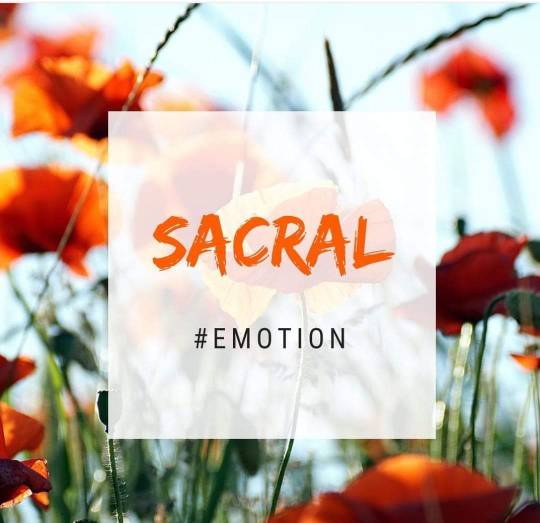
SACRAL CHAKRA (Svadisthana)
is located a little under your belly button, and associates with the colour orange.
Sacral holds your creativity, sexuality, flow and flexibility.
When unbalanced your potential is blocked, you can lack inspiration, passion and sexual desire.
If your sacral chakra is overactive you can be over stimulated, and have emotional overreactions.
Crystals to use for your sacral should be orange in colour.
12 notes
·
View notes
Text

aga.somaheart
May you be like water, pure and free flowing.
May each breath you take remind you of the ocean within you, the ocean of emotion.
May your life force be liberated, your true playful innocent nature expressed!
May you be at ease, floating along the river of your life, supported by the Sacred Waters within your being.
May you be like water, pure and free flowing.
💦💙🍄
Continuing the journey through the chakras. The theme of the this week is:
SACRAL CHAKRA 🧡SVADISTHANA
Water 💚Emotion - Inner Child - Creativity - Play
This week we practice playing with our inner child, dancing, singing, drawing, and splashing around in puddles!
Feeling our feelinsgs and expressing in color! Activiating our creativity with art forms and simply doing what feels good.
20 notes
·
View notes
Text

Let’s have a Chakra Chat! ❤️🧡💛💚💙💜🤍
The chakras are composed of seven main energy centers in the body, extending from the base of the spine to the crown of the head. You can think of them as spinning wheels of energy that each have different qualities and characteristics. Chakras can be open or blocked, balanced or out of whack. To live in harmony with the universe, we want to ensure that our chakra system is in balance, so that we are better connected with both our inner and outer world.
Let’s take a deep dive into the Root Chakra, or Muladhara Chakra.
Our root chakra represents our sense of stability; our foundation in life.
Color = Red
Mantra = Laam
Element = Earth
Location = Base of the spine
When we have healthy root chakra energy, we feel grounded and secure in the world in which we live. We have the ability to trust in the universe. A root chakra that is out of whack will show up in ways which don’t serve us – we may be living in fight or flight mode, we may feel paranoia or have a tendency to hoard. We may have fear about moving forward or get stuck in looking back. It’s important for us to find balance in our Root Chakra first and foremost, so that we have a strong foundation with which to build the rest of our life.
How to balance or open our root chakra? 🔻
Mantra: 📿🙏
Chant Laam 108 times with a set of Mala beads while sitting upright, feeling your root chakra connected to the earth below, visualizing it as a stable foundation with which to support the rest of the chakras located above.
Foods to eat: 🍎🍓🍠
Root vegetables (beets, carrots, sweet potatoes, or any foods that grow inside the soil/earth.). Red fruits such as apples, raspberries, strawberries.
Yoga pose to support: 🧘🧘🏾♂️🧘
Legs up the wall – Viparita Karani. Find an open wall space and sit sideways against the wall, then swing your legs up the wall. Allow your upper body to relax against the earth below you. Relax here as your circulation shifts and the blood flows from your feet towards your root chakra. Place an eye pillow over your eyes and relax here for up to 15 minutes. This pose is not advised for those with glaucoma, recent surgeries, or other medical conditions – please confirm with your doctor before taking part in any physical yoga practice.
Come back next week as we move up the spine to learn about the Sacral Chakra – Svadisthana. 🧡
Until then, begin the process of opening your chakras by listening to some of the free chakra meditations located on my website: https://buff.ly/3Ec90gr
Davidji
10 notes
·
View notes
Text
Yoga
Subtle energy channels – Kundalini, Sushumna, Ida & Pingala
The origins
Thousands of years before X-rays and MRIs, ancient civilisations regarded the intricate workings of the inner body in a very different way. Across the East, holistic medical systems like Traditional Chinese Medicine (TCM), Tibetan medicine and Ayurveda understood that even though we can’t see them, there are countless channels, vortexes and layers of energy running through us. TCM refers to these channels of energy as meridian lines, whilst the Yogis of India first called them Nadis. If you’ve ever been to a Kundalini yoga class, practiced pranayama or visualisation, you may have come across these subtle energy channels before, but do you know how to work with them to elicit powerful effects?
Energy channels
It is said that there are over 72,000 subtle channels of energy running through the body. Whilst veins and arteries carry blood and oxygen, these invisible channels carry prana and Qi – our ‘life force energy’. The ancients understood that just as a problem within veins and arteries can result in physical issues, a blockage or deficiency within the Nadis and meridians can manifest as various physical, psychological and emotional imbalances. In recent years, researchers have even found that the meridian lines correspond perfectly to the lines of fascia – a connective tissue responsible not only for physical wellbeing, but that also has the potential to hold emotions too – think of it as holding ‘issues in your tissues’.
Within yogic texts, there are three channels of energy that can help to change our energetic state, and encourage a powerful energy known as Kundalini to rise up the spine to the top of the head – where the upper Chakras (powerful energy centres) are found – potentially resulting in a state of bliss and enlightenment. These three channels are known as Sushumna, Ida and Pingala. Just like the meridian lines, scientific research has also found that when we stimulate these energy channels through breathwork or other means, it can have a very real effect upon the mind and body too.
Kundalini energy
At the very base of the spine, we find our lowest and most primal base energy centre – Muladhara Chakra. Just below this point is said to be an abundance of potential energy just waiting to move. Think of this as the potential we have to feel our most powerful and vibrant, ecstatic and enlightened.
The yogis say that pranayama, meditation, mantra and asana practices can help clear the way for this energy to flow so that we can reach our highest potential in mind, body and spirit. This potential energy is represented in many texts as a coiled snake waiting to spring. This is known as Kundalini, meaning ‘coiled’ or ‘circular’, from the Sanskrit term ‘coiled female serpent’. It is also referred to as ‘Shakti’. When this powerful feminine Shakti energy is awakened through yoga practice, it rises to the top of the head to meet with the masculine energy known as Shiva.
Sushumna Nadi
Running up the length of the spine and all the way to the top of the head, Sushumna Nadi is the main channel of energy that the Kundalini Shakti rises up through. Translated as ‘joyful mind’ or ‘most gracious mind’, the name implies that when this energy channel is clear and flowing freely, we benefit from a happier and more uplifted mental and emotional state. Sometimes Sushumna Nadi is referred to as Brahma Nadi, with ‘Brahma’ representing the divine, absolute or a form of God. Some may feel that when experiencing states of ecstasy and joy, that they’re able to connect to their understanding of divinity or Godliness.
Along this main subtle energy channel are located the seven main chakras from the tailbone to the top of the head. These are: Muladhara, Svadisthana, Manipura, Anahata, Vishuddi, Ajna and Sahasrara. When the chakras are ‘spinning’ well and in a good state of balance without any blockages, the potential Kundalini Shakti energy at the base of the spine is free to flow upward along Sushumna Nadi. Meditating on the chakras, performing asanas to stimulate energy to flow through them such as twists, inversions and backbends, and practicing various forms of pranayama (breathing techniques) are all intended to cultivate a clear pathway for energy to flow. If you’ve ever been to a Kundalini yoga class, you may have also practiced Kriyas – a set of specific yoga practices intended to balance the chakras and awaken the potential feminine energy at the base of the spine.
Breathing through the nose
Pranayama involves breathing practices that almost always focus on breathing through the nose. This is an underrated yet incredibly vital ability we have. Its importance has become more widely known with the popularisation of yoga, as well as methods like Patrick McKeown’s Oxygen Advantage, and James Nestor’s book Breath in the last several years.
Humans have evolved to breathe through the nose, filtering debris and bacteria through the nasal passages upon inhalation, and enabling proper oxygen absorption. We’re also able to breathe far more efficiently, increasing oxygen saturation in the blood, brain and tissues, as well as impacting the nervous system. The very act of breathing through the nose itself serves to widen the nasal passages and improve breathing function. This is why those who suffer from respiratory issues often find pranayama beneficial.
Left or right nostril?
It isn’t just the simple practice of breathing through the nose that benefits us. The nostril we choose to breathe though can have a huge impact on our state of being too. The traditional yogic practice of Swara Yoga is a set of somewhat secretive verses on the movement, patterns and power of the breath. In his book Breath, James Nestor explains; “The Shiva Swarodaya describes how one nostril will open to let breath in as the other will softly close throughout the day. Some days, the right nostril yawns awake to greet the sun; other days, the left awakens to the fullness of the moon”.
The text states – and anecdotal studies show – that these rhythms of left and right nostril activation (known as ‘nasal cycles’) are shared by the whole of humanity, and are especially influenced by the activity of the sun and moon. Studies also show that the nostrils really do switch dominance throughout the day, usually in relation to how we feel emotionally, as well as our environment.
Balance your energy body with José de Groot
Using Nadi Shodhana and acupressure points to balance and clear the Yin and Yang energies of your body, this practice will calm an active mind, or wake up a drowsy mind, due to two different approaches to this Pranayama technique. Accumulated emotions, tension and fatigue may also be released, which can also be very healing
3 notes
·
View notes
Text
Eka Pada Utkatasana, also known as Half Chair Pose or Ardha Utkatasana, stretches the hamstrings, quadriceps and gluteus muscles while strengthens the legs core, ankles and foot.
🔸 🔸 🔸 🔸 🔸 🔸 🔸 🔸 🔸 🔸
🧘♂️ Information:👉
1️⃣ Known as:👉 Eka Pada Utkatasana, Half Chair Pose, One Legged Chair Pose, Ardha Utkatasana, Standing Pigeon Pose, Whooping Crane Pose, Standing Figure Four Pose
2️⃣ Sanskrit name:👉 एक पाद उत्कटासन
3️⃣ IAST:👉 Eka Pāda Utkaṭāsana
4️⃣ Pronunciation:👉 eh-kuh pah-dah Oot-kah-TAHS-anah
5️⃣ Level:👉 Intermediate
6️⃣ Type:👉 Standing, balance, hip-opener
7️⃣ Focus:👉 Lower body, hips, core
8️⃣ Total time:👉 30 to 60 seconds
9️⃣ Drishti:👉 Forward
🔟 Chakra:👉 Svadisthana Chakra, Muladhara Chakra
💡 Indications:👉 Circulatory, respiratory, and metabolic system, hormonal functions, legs, core muscles, nervous system
💡 Counterposes:👉 Virasana (Hero Pose), Natarajasana (Dancers Pose), Setu Bandha Sarvangasana (Bridge Pose), Uttanasana (Standing Forward Fold Pose), Padahastasana (Gorilla Pose), Utthan Pristhanasana (Runners Lunge Pose)
💡 Preparatory poses:👉 Adho Mukha Svanasana (Downward-facing Dog Pose), Tadasana (Mountain Pose), Bhujangasana (Cobra Pose), Utkatasana (Chair Pose), Anjenayasana (Crescent Lunge Pose)
💡 Follow-up poses:👉 Parivrtta Utkatasana (Revolved Chair Pose), Garudasana (Eagle Pose), Eka pada Koundinyasana I (One-Footed Pose Dedicated to the Sage Koundinya I), Parsva Bakasana (Revolved Crow Pose), Ardha Matsyendrasana (Half Lord of the Fishes pose), Malasana (Garland Pose)
💡 Contraindications:👉 Hips, knees, spinal, or ankle injuries
🔸 🔸 🔸 🔸 🔸 🔸 🔸 🔸 🔸 🔸
#yogateacher#yogadaily#yogaeveryday#fit#yoga poses#workout#Fitzabout#Fitabouts#Yoga poses#yoga practice#yoga power#yoga philosophy#yoga programme#Half Chair pose#Eka Pada Utkatasana#Ardha Utkatasana
2 notes
·
View notes
Link
Check out this listing I just added to my Poshmark closet: MIND OF THE MANTRA THE SVADISTHANA LOW WAISTED SUPER BELLS.
0 notes
Text
CHAKRAS, COLOURS, & STONES

The word Chakra means "wheel" in Sanskrit, there are 7 major energy centers in the human body (and hundreds of minor ones). Chakras receive, assimilate, and distribute energy throughout our energetic fields (auras). Each Chakra is unique as it has it's own characteristics and functions. These 7 energy systems resonate and vibrate at the same frequency as their respective colors of the rainbow, and are the network through which the body, mind and spirit, can come together. Your chakras are also energy vortexes (disc) that distribute universal life force energy throughout the body. This life energy is called "Prana" and flows down through the top of your head (the crown chakra) through your spine, to your pelvic floor (root chakra).
Our root chakra for example is represented as the color red, it is a very dense Earth vibration. Whereas our upper crown Chakra vibrates at the highest frequency.When energy flows evenly through each chakra we are balanced and able to achieve optimal health. Our chakras work together and when one becomes damaged, blocked, or overloaded the other chakras will try to compensate, which creates strain and suffering within the entire system. All of the components of our chakra system need to work together in synch with one another in order to maintain balance in our bodily and spiritual system.
I will share the Seven Chakras, color properties and their corresponding stones. Many books and searches on chakras, crystals and healing may have some conflicting information, I recommend doing your own research, and using which stones resonate best for your specific needs. I have also shared some of the characteristics of a healthy balanced chakra, as well as the characteristics of an imbalanced chakra center. "Chakra practices" are practical activities that can be done daily to help us reconnect, and re-balance the energy centers that may be imbalanced.
First Chakra: Muladhara (support)
Balanced: first energy characteristics is: balanced, grounded, healthy, safe and patient.
Imbalanced: Money issues, addictions, low self-esteem.
Stones: red and black stones such as ruby, coral, garnet, red jaspar, hematite, obsidian, black tourmaline.
Red is the symbol of life , strength, vitality as well as physical nature, our Earth connection and survival needs. Red will stimulate and is associated with heart, fire, anger, and passion.The red of terrestrial fire is transmuted into golden yellow (pure spirit) as it rises. Red is the color of primitive types. For healing red stones are effective in bringing healing energy in deficient nutrition, depression, or lethargy. It is a stimulating vibration. First Chakra Practice: Sit in nature, take your shoes off and let your feet sink into the grass, sand, or dirt. Plant a garden, do something that will connect you to the Earth.
Second Chakra (Svadisthana): 1-2 inches below navel or branching left side at spleen.
Balanced: spontaneous, social, passionate, and trusting.
Imbalanced: Lack of Spontaneity, rigid beliefs, sexual issues, resentful
Stones: Carnelian, orange calcite, tiger's eye
Orange is the symbol of energy, composed of both red and yellow. Red symbolizes personality while yellow is symbolic of wisdom. Which is why the integration of the two colors we are capable of overcoming anger and establish self control. For healing, orange is essential for health and vitality. It is a warm and positive color which is also stimulating and has been said to regulate the intake of food. The second chakra is about friendliness, creativity, self-motivation sexuality, emotions and intuition. Second chakra practice: Join a community group, try a new activity, do anything that involves water, and nurturing yourself.
Third Chakra Solar Plexus (manipuraka)
Balanced:Confident, warm, empowered and energetic.
Imbalanced:Powerlessness, Stomach related issues, anger,confused
Stones: Yellow & Golden stones: Amber, Goldstone, Topaz, Citrine.
Yellow is the symbol of the mind, intellect, high intelligence, wisdom and the mental plane. Yellow is positive, magnetic, and its vibration has a tonic effect on the nerves. The solar plexus can be seen as the "organizing brain" of the nervous system. It is our inner "Sun", or "power center" and should be kept in balance. Yellow is a great equalizer for irritable conditions of the nervous system, which can unbalance the energy of the solar plexus. our third chakra affects our self-confidence,mental clarity, happiness, and courage. Third Chakra practice: write down what angers you, and burn it. Focus on a martial art, cry at a sad movie, but always remember to laugh.
Fourth Chakra (Anahatha) Heart Center
Balanced:Compassionate, nurturing, forgiving, understanding.
Imbalanced:Heart related health issues, coldness towards others, despair, unworthy of love
Stones: Green & Pink stones are with the heart center: Emerald, green tourmaline, malachite, jade, aventurine, Rose Quartz, moss agate, green calcite, rhodochrosite, pink calcite, unakite..
The heart chakra is the center of compassion, when this chakra is open, you transcend the limits of ego and identify with other people, plants, animals and all of life. Green is the color of nature and offers us the balancing vibration of healing our nervous system. Green is radiated everywhere in nature, from plants, grass, and tress to blossoming new flowers it IS nature. The color green, and its corresponding stones do not excite, inflame, or irritate and because of this strong influence on the heart chakra working with green stones makes for excellent aid in heart problems, or blood pressure disorders. Pink stones also work on the heart, the color pink offers the healing of softness, affection, love. This is wonderful for those who would like to allow more softness into their heart centered meditations. Pink tourmaline, kunzite, and rose quartz are excellent in this case. 4th Chakra practice: Take yourself on a date, be romantic and kind to yourself. Volunteer in your community, forgive someone, more importantly, practice forgiving yourself. Reach out to those who are in need.
Fifth Chakra throat center (Visshudha)
Balanced: Self-expressive, creative, honest, and commutative.
Imbalanced: Self-righteous, talks too much, lacks creativity, indecision, quiet, holds back, inconsistent, can't express thoughts.
Stones:Lapis lazuli, blue calcite, kyanite, angelite, aquamarine, amazonite.
The throat chakra is the place that helps you to communicate, express, and really listen to others when they speak. This energy center at your throat is the doorway to your angels and spiritual guides. Most communication is received through sight or hearing, but you can also receive information or messages that are harder to define. The blue energy of the 5th chakra is cooling, which can make you feel peaceful and relaxed. when you're at ease its easier to be able to hear what others are saying because it's easier to pay attention when you're calm. The sky blue energy will help you to feel comfortable speaking up and saying what you need to say. 5th chakra practice: Express yourself through art, write for yourself, and talk only to people who will truly listen to you.
Sixth Chakra: Third Eye (Ajna)
Balanced:Intuitive, imaginative, visual, and insightful.
Imbalanced:Lack of vision, nightmares, migraines, manipulative, religiously dogmatic, non-assertive, oversensitivity to feelings of others, afraid of success, Unable to distinguish between ego, and higher self.
All indigo/Purple stones: Amethyst, Lapis Lazuli, Sodalite,Purple Sapphire, Fluorite.
Your sixth chakra (third eye) is the center of your psychic powers and higher intuition. Through the power of the sixth chakra, you are able to receive guidance, channel and tune into your higher self. This is the energy center that allows you to experience telepathy, astral travel, and past lives. The color indigo symbolizes the bridge between finite and infinite. Your third eye is where you “see” the unseen, know the unknown, and feel what isn’t obvious. It is in this divine color ray of indigo energy that you can connect with the world of spirit. Placing a Lapis Lazuli on the third eye is a practice utilized by the ancients for this exact purpose, connecting to the divine. 6th chakra practice: Daydream, and visualize what you wish to manifest in your life. meditate and focus on the present.
Seventh Chakra: Crown (Sahasrara)
Balanced: Open minded,inspired, and spiritually connected.
Imbalanced: Hopelessness, depression, alienation
Stones: Clear Quartz, amethyst, selenite, Lepidolite, moonstone.
Your crown chakra is located at the very top of your head, and your higher crown chakra extends beyond the top of your head creating a glowing halo like globe that surrounds it. The Seventh Chakra is represented by the color of violet (spiritual mastery). This chakra corresponds with the highest element in our nature. Violet is also a high vibrational color, combining both red (matter) and blue (spirit). The crown Chakra is “to know” when healthy and opened we feel inspired, spiritually connected, and open to the divine. Clear quartz is one of the most powerful and effective stones to use at the crown chakra. You may also utilize an amethyst point or cluster on your third eye while laying down when you sit to meditate. 7th chakra practice: Ask for what you want, write down your intentions, connect with your higher power and write down all things good in your life.
0 notes
Text

🕉 Yoga asanas for svadisthana, sacral chakra healing. 🙏✨
#msiys #multistyleindianyogaschool 🇮🇳
.
.
.
🏖 Our next Yoga Teacher Training Course (YTTC) Dates are given below;
✅ 50 Hours (Online YTTC & Goa YTTC) Dates
🔸️ 05 Nov 2023 - 11 Nov 2023
🔸️ 26 Dec 2023 - 02 Dec 2023
🔸️ 17 Dec 2023 - 23 Dec 2023
🔸️ 07 Jan 2024 - 13 Jan 2024
🔸️ 28 Jan 2024 - 03 Feb 2024
🔸️ 18 Feb 2024 - 24 Feb 2024
🔸️ 10 Mar 2024 - 16 Mar 2024
✅ 100 Hours (Online YTTC & Goa YTTC) Dates
🔸️ 12 Nov 2023 - 25 Nov 2023
🔸️ 03 Dec 2023 - 16 Dec 2023
🔸️ 24 Dec 2023 - 06 Jan 2024
🔸️ 14 Jan 2024 - 27 Jan 2024
🔸️ 04 Feb 2024 - 17 Feb 2024
🔸️ 25 Feb 2024 - 09 Mar 2024
🔸️ 17 Mar 2024 - 30 Mar 2024
✅ 200 Hours (Online YTTC & Goa YTTC) Dates
🔸️ 05 Nov 2023 - 25 Nov 2023
🔸️ 26 Nov 2023 - 16 Dec 2023
🔸️17 Dec 2023 - 06 Jan 2024
🔸️ 07 Jan 2024 - 27 Jan 2024
🔸️ 28 Jan 2024 - 17 Feb 2024
🔸️ 18 Feb 2024 - 09 Mar 2024
🔸️ 10 Mar 2024 - 30 Mar 2024
✅ 300 Hours (Online YTTC & Goa YTTC) Dates
🔸️ 05 Nov 2023 - 02 Dec 2023
🔸️ 03 Dec 2023 - 30 Dec 2023
🔸️ 31 Dec 2023 - 27 Jan 2024
🔸️ 28 Jan 2024 - 24 Feb 2024
🔸️ 25 Feb 2024 - 23 Mar 2024
📲 For Bookings & More Info,
🔸️ Website : www.multistyleindianyogaschool.com
🔸️ Email : [email protected]
🔸️ What'sapp : +91 8767810642 (Management Team)
🔸️ Direct Message Us or Visit The Links In Our Bio
.
.
.
#yogateachertraining #yogaretreat #yogateachertrainings #yogattc #yttcindia #ytt300 #yttc300 #ytt200 #yttc200 #ytt100 #yttc100 #yttconline #yogafamily #yttcindia #yogatraining #bookyogaretreat #yoga #yogabali #yogarishikesh #yogagoa #yogausa #yogauk #yogathailand #yogaeurope #yogagermany #yogausa #yogadubai #onlineyttc
0 notes
Text
colors + associations

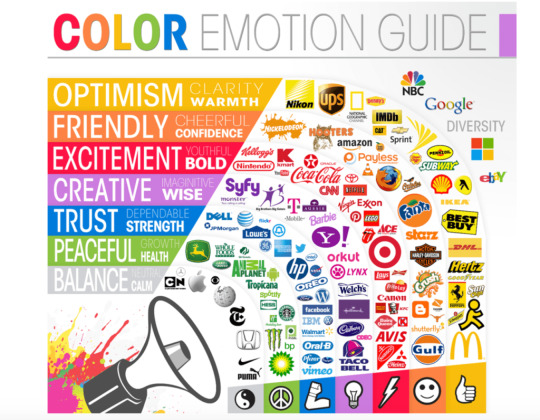


different colors represent different things to our brains.
The red-to-yellow part of the spectrum activates the sympathetic nervous system, which causes fight-or-flight response: the heart rate increases, blood sugar rises, the blood supply to the muscles increases, and all senses heighten.
Blue-to-green, on the other hand, suppresses the sympathetic nervous system while activating the parasympathetic nervous system. This sends the body a signal to rest and relax: pulse and breathing slows down and digestion starts. (3)
color influences emotions, and therefore sparks bias.
an experiment in combat sports showed that color can cause bias in referees: they gave more points to competitors in red uniforms, even when the performance of the competitors in blue was identical, because red is associated with power and aggression—positive traits in combat sports.
In an experiment conducted in a Swiss prison, the walls were painted pink. The psychologist found that this had a calming effect, reducing the level of aggression of inmates. (3)
color-coding for focus / productivity
the right color-coding and good calendar management helps to increase productivity and decrease fatigue. Just as we train a dog to respond to simple commands, we can teach our own brains to recognize the signals indicated by the colors in our calendar. (3)
Yellow
represents warmth, clarity, and optimism. (1)
the Manipura (Solar Plexus) Chakra. The sunny yellow represents working towards something, ideal for actions that can shape your future. (1)
Orange or yellow: Tasks that excite you. Both orange and yellow tend to evoke feelings of happiness, joy, and excitement. Use them to highlight hobbies, special events, or anything else that gets you excited. (2)
Orange
Friendly, cheerful, and confident. (1)
the Svadisthana (Sacral) Chakra. A color such as orange is associated with creativity and your pleasure center. Label activities that inspire your passion with this color. (1)
Orange or yellow: Tasks that excite you. Both orange and yellow tend to evoke feelings of happiness, joy, and excitement. Use them to highlight hobbies, special events, or anything else that gets you excited. (2)
Red
Excitement, bold, and youthful. (1)
the Muladhara (Root) Chakra. Red is a hot color and represents your needs and survival. This is perfect for work-related tasks since you need to get your work done to pay your bills. (1)
Use red for detail-oriented tasks. ... red “is the most effective at enhancing our attention to detail.” Red is the ideal color for coding tasks that deserve your undivided attention. (1)
Your most urgent tasks. Red is associated with passion, anger, and power. It also catches people’s attention. Use it to note urgency. (2)
Purple
Creative, wise, and imaginative. (1)
Indigo, the Ajna (Third Eye) Chakra. represents focus and intuition. Use indigo with the tasks that require attention and a clear mind. (1)
brainstorming sessions or writing blog posts. (1)
Purple: Creative tasks Purple is often viewed as exotic, mysterious, sensual, or soothing. Use it to highlight creative tasks, such as brainstorming sessions. (2)
Blue
Trustworthy, dependable, and strong. (1)
the Visshudha (Throat) Chakra. associated with communication and expression. Labeling activities with this color let you express your minds thoughts — with this color. (1)
Color less-taxing tasks blue.“Blue triggers a relaxation response in our brains,” (1)
Breaks or easy, enjoyable tasks ... that help you to rest and recharge. (2)
Green
Peaceful, growth, and health. (1)
the Anahata (Heart) Chakra. This color symbolizes compassion and unconditional love. Use green to label personal activities. (1)
associated with health and tranquility. (1)
ex) lunch break. (1)
Green: Health- or wealth-related tasksGreen can either be used for health-related tasks (gym sessions, meal breaks, or doctor’s appointments) or wealth-related tasks (building your client base, researching pricing, or finding new streams of income). (2)
Grey
grey represents balance. Use grey for highlighting your meetings. Using a bland color for meetings maintains a balance needed to run a meeting successfully. (1)
Gray: Tentative tasks Gray is subtle and a great color to use for events that may not be set in stone. Once you’ve confirmed the event, you can change its color. (2)
White
Use white for prep-time. White represents happiness and simplicity so that it can be used for those critical prep sessions before a meeting or presentation. (1)
Planning-based tasksWhite often represents simplicity, potential, and happiness. Use it to highlight planning sessions. (2)
1. https://www.calendar.com/blog/how-to-color-code-your-calendar-for-optimal-success/
2. https://forge.medium.com/how-a-color-coded-calendar-helps-you-conquer-your-day-easy-tips-ea07177bb03
3. https://blog.virtosoftware.com/why-you-need-to-color-code-your-calendar/
4. https://www.colorpsychology.org
5. https://mindsea.com/color-theory/
6. https://www.wordstream.com/blog/ws/2022/07/12/color-psychology-marketing
0 notes
Text
0 notes
Text
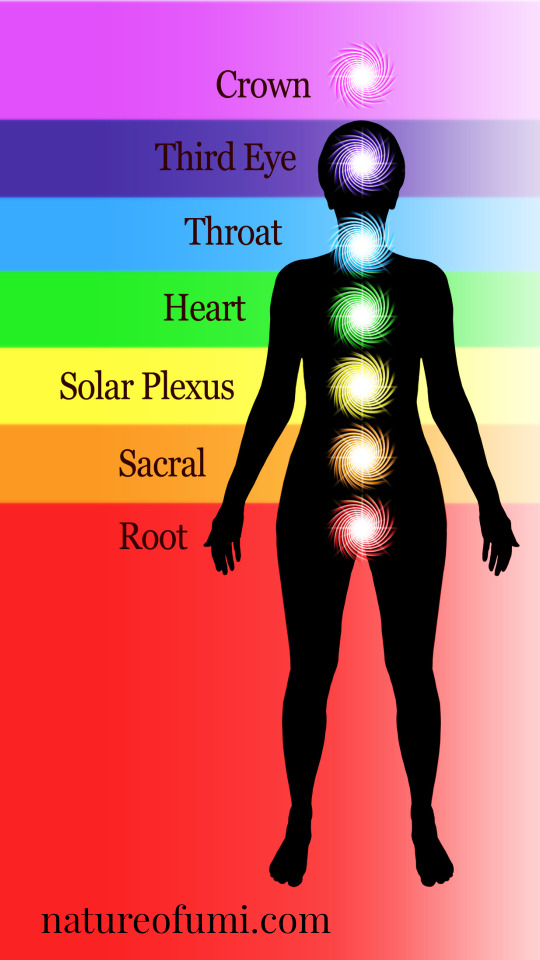
There are seven chakras in the human body - each one located at a different point along the spine. These energy centers are responsible for our physical, mental, and emotional well-being. When our chakras are out of balance, we can feel disconnected from our authentic selves and start to experience physical, mental, and emotional dis-ease. The chakras can be thought of as spinning wheels of energy. Each one is connected to a different area of our lives. When they are in balance, they spin smoothly and evenly. When they are out of balance, they can spin too fast or too slow, or become blocked altogether. Learning about your chakras and how to keep them in balance is a powerful way to support your overall health and well-being.
❤️(Root)
🧡 (Sacral)
💛 (Solar Plexus)
💚 (Heart)
💙Throat)
💙 (Third Eye)
💜 (Crown)
#sevenchakras #chakrahealing #chakrabalance #yoga #meditation #rootchakra #sacralchakra #solarplexuschakra #heartchakra #throatchakra #thirdeyechakra #muladhara(root) #svadisthana(sacral) #manipura(solarplexus) #anahata(heart) #vishuddha (throat) #ajna(thirdeye) #sahasrara(crown) #selfhealing #natureofumi #azizbeyhealthandbeauty
0 notes
Text
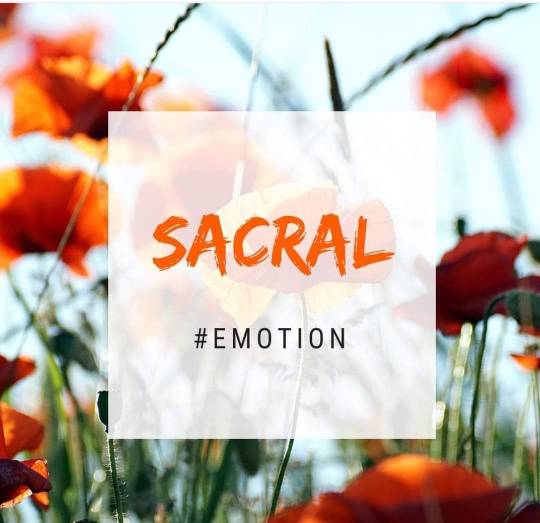
SACRAL CHAKRA (Svadisthana)
is located a little under your belly button, and associates with the colour orange.
Sacral holds your creativity, sexuality, flow and flexibility.
When unbalanced your potential is blocked, you can lack inspiration, passion and sexual desire.
If your sacral chakra is overactive you can be over stimulated, and have emotional overreactions.
Crystals to use for your sacral should be orange in colour.
9 notes
·
View notes